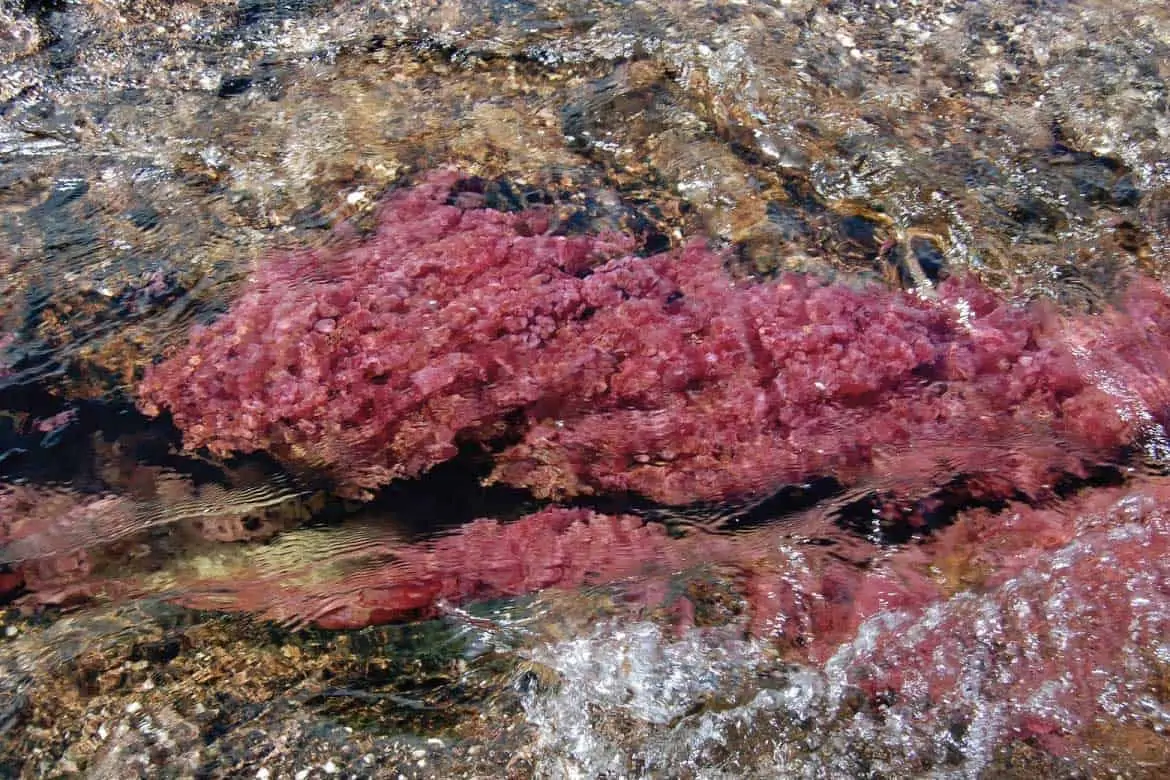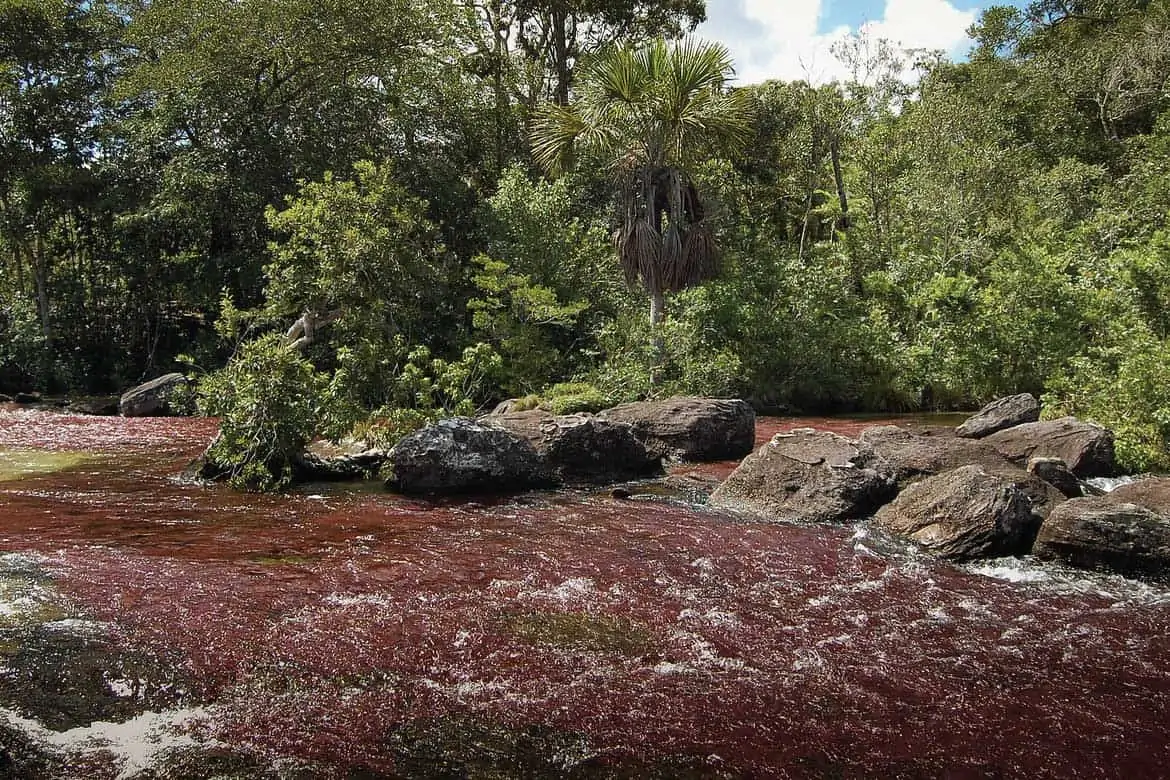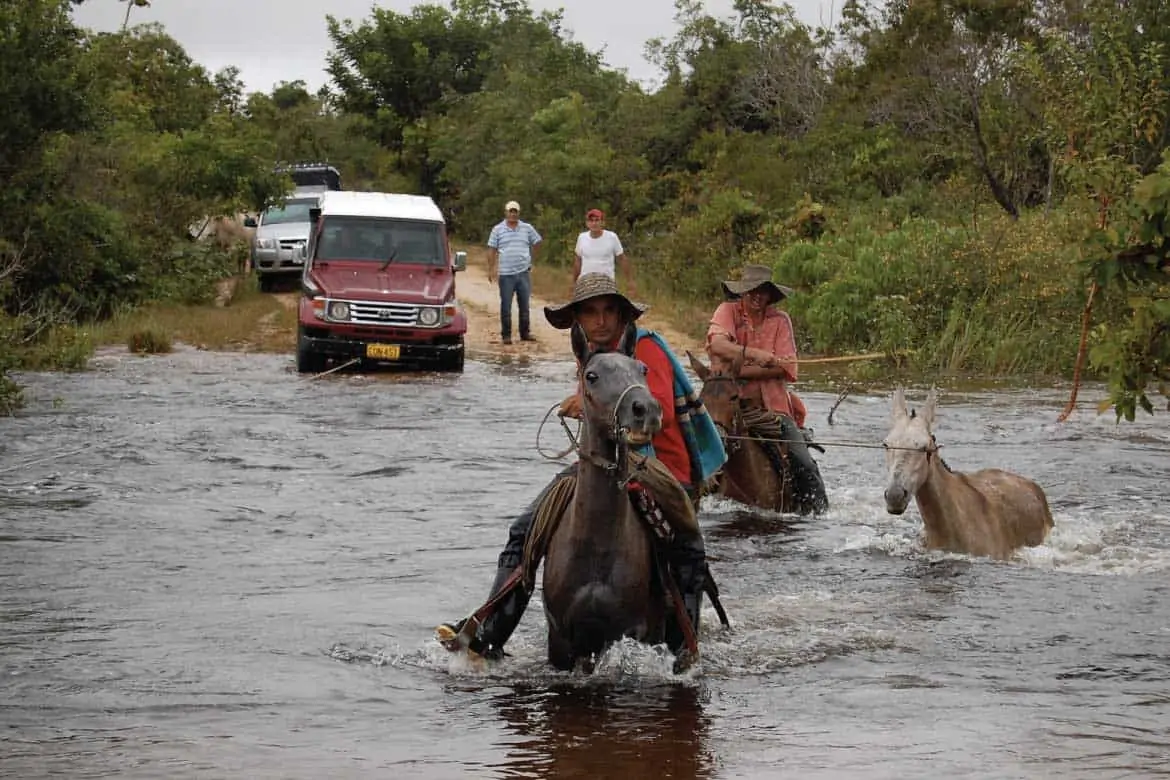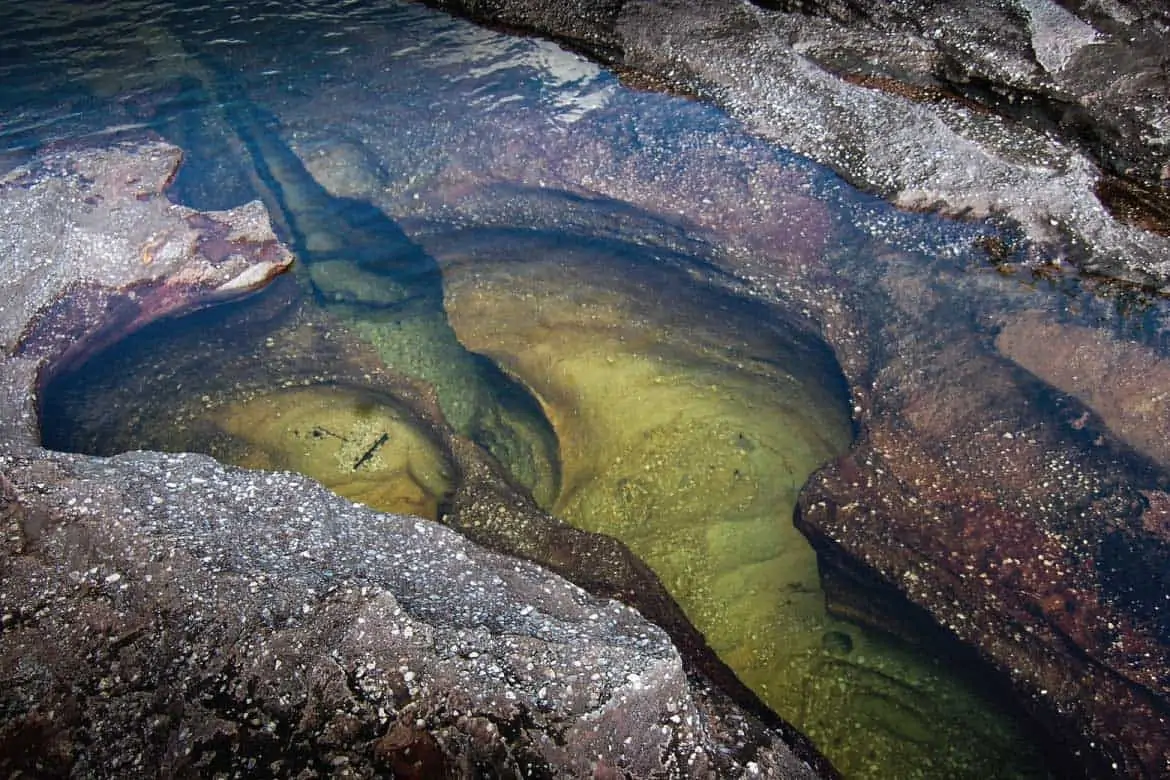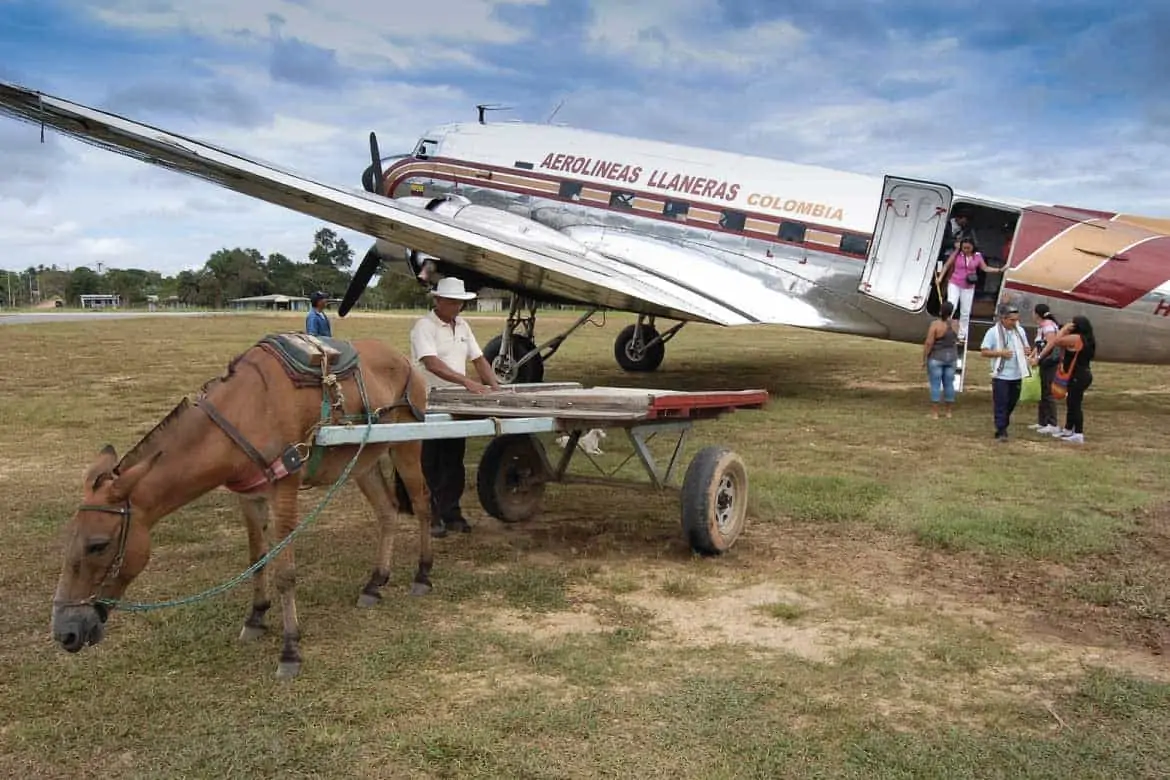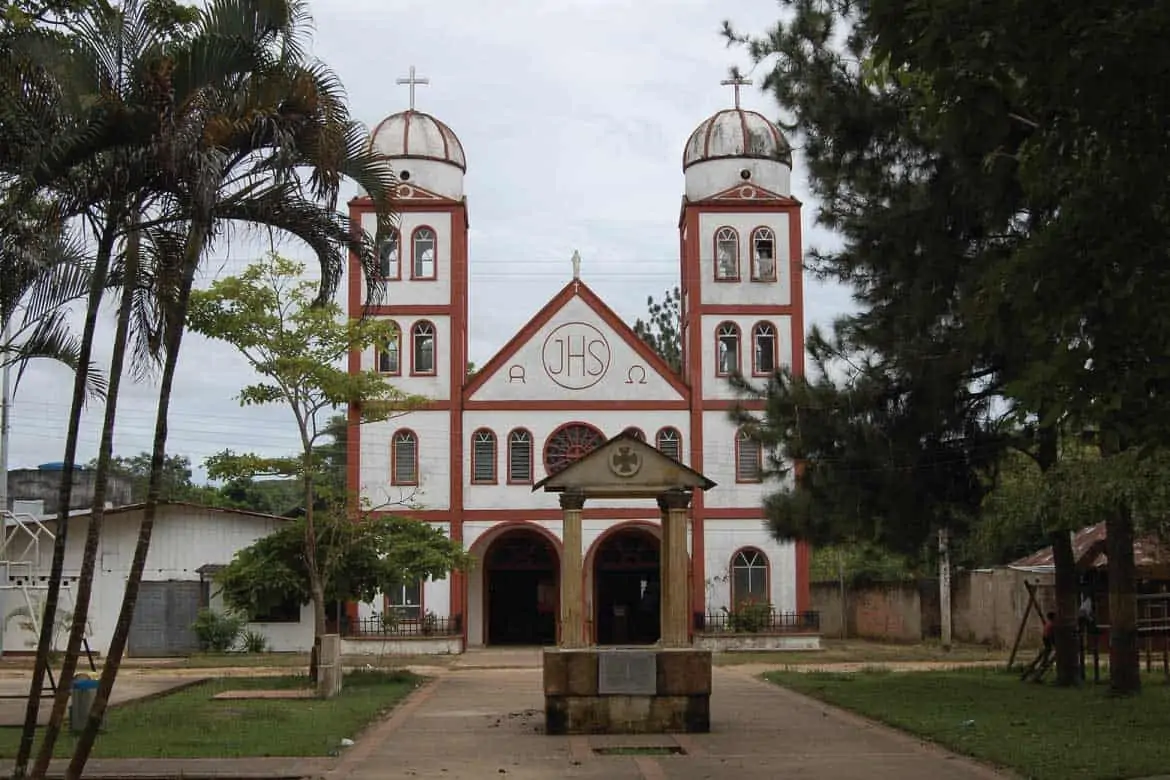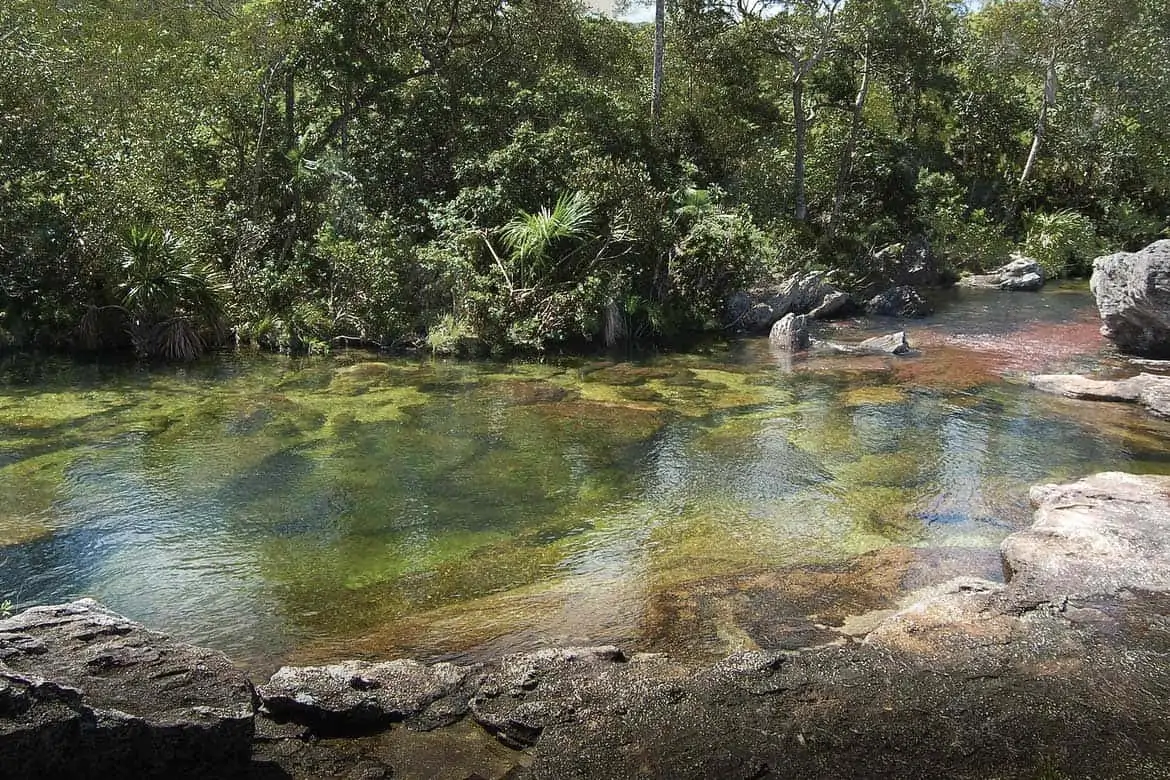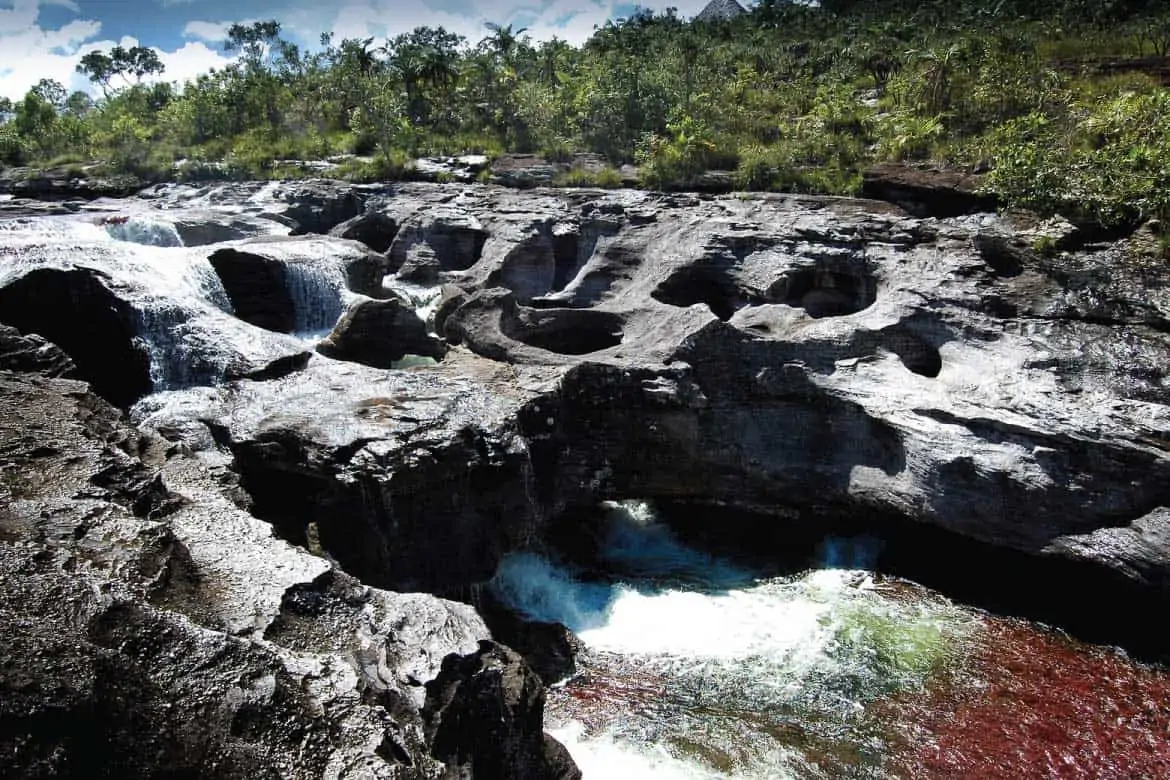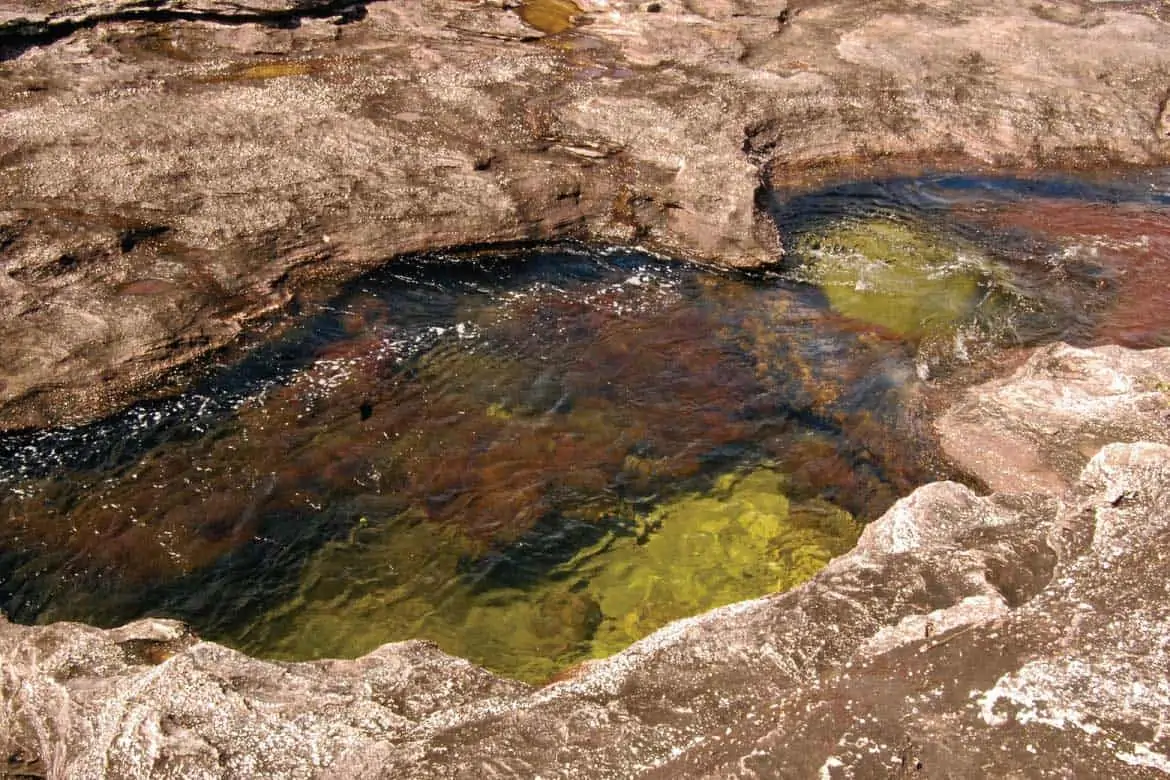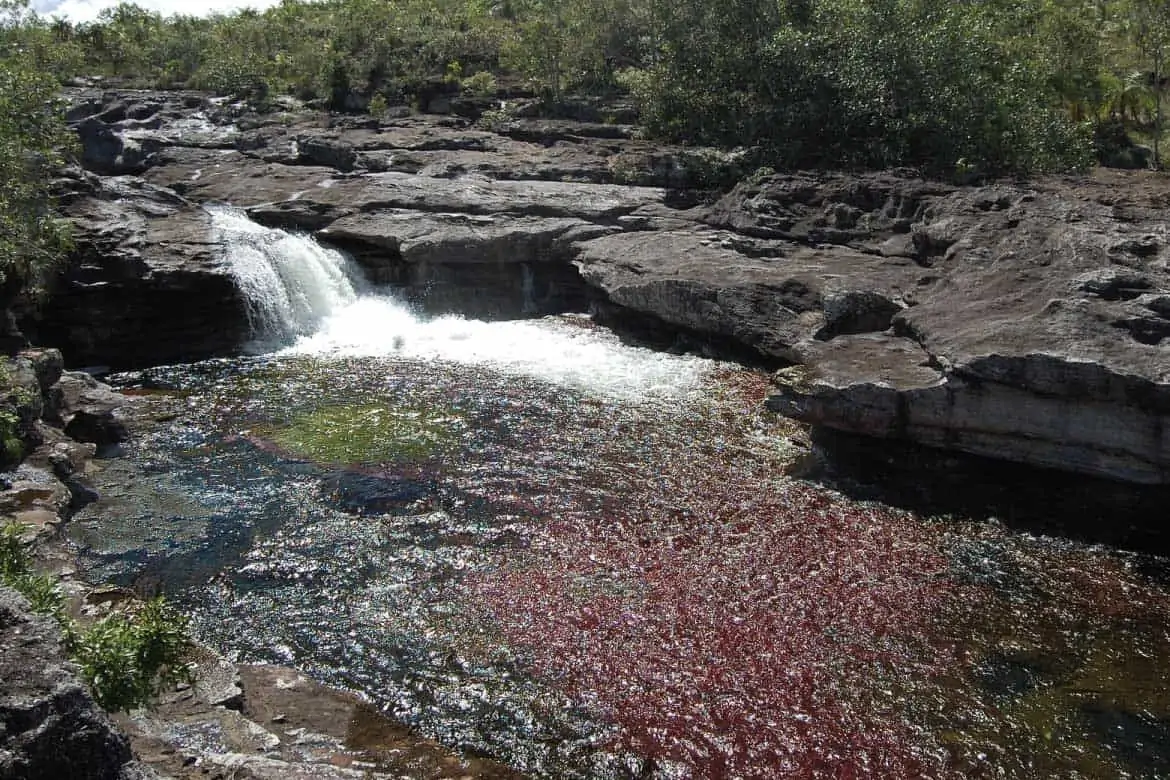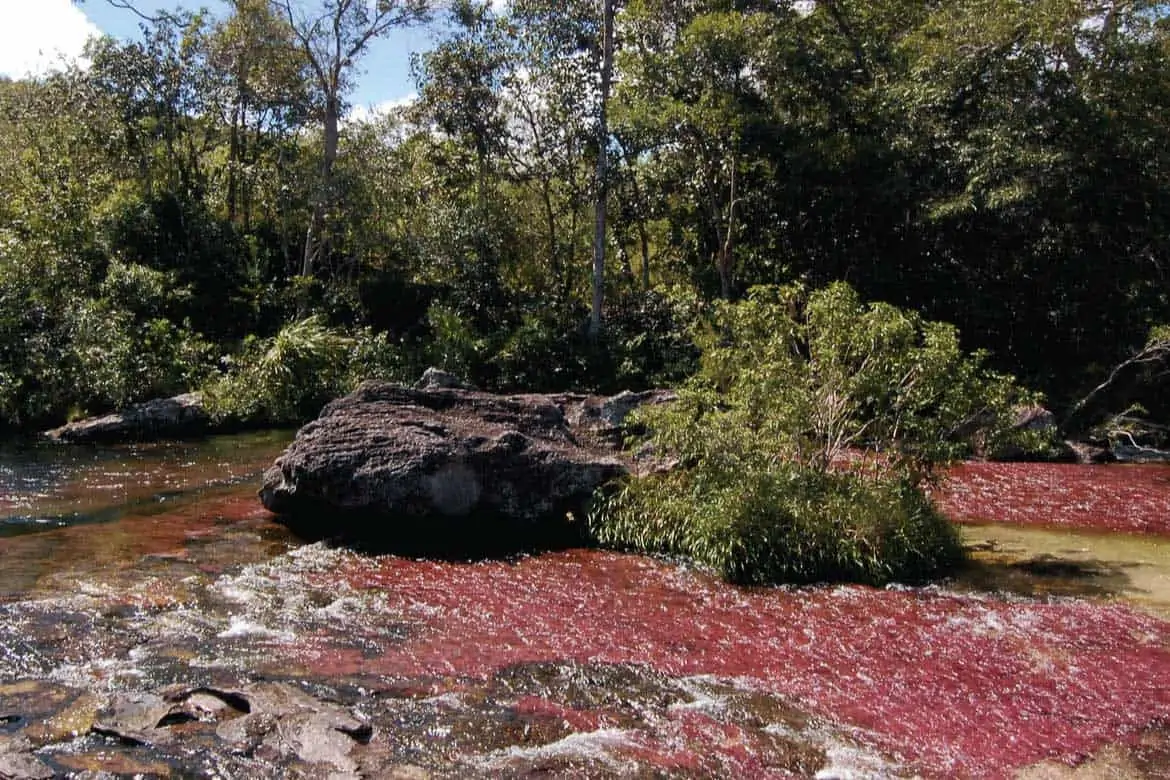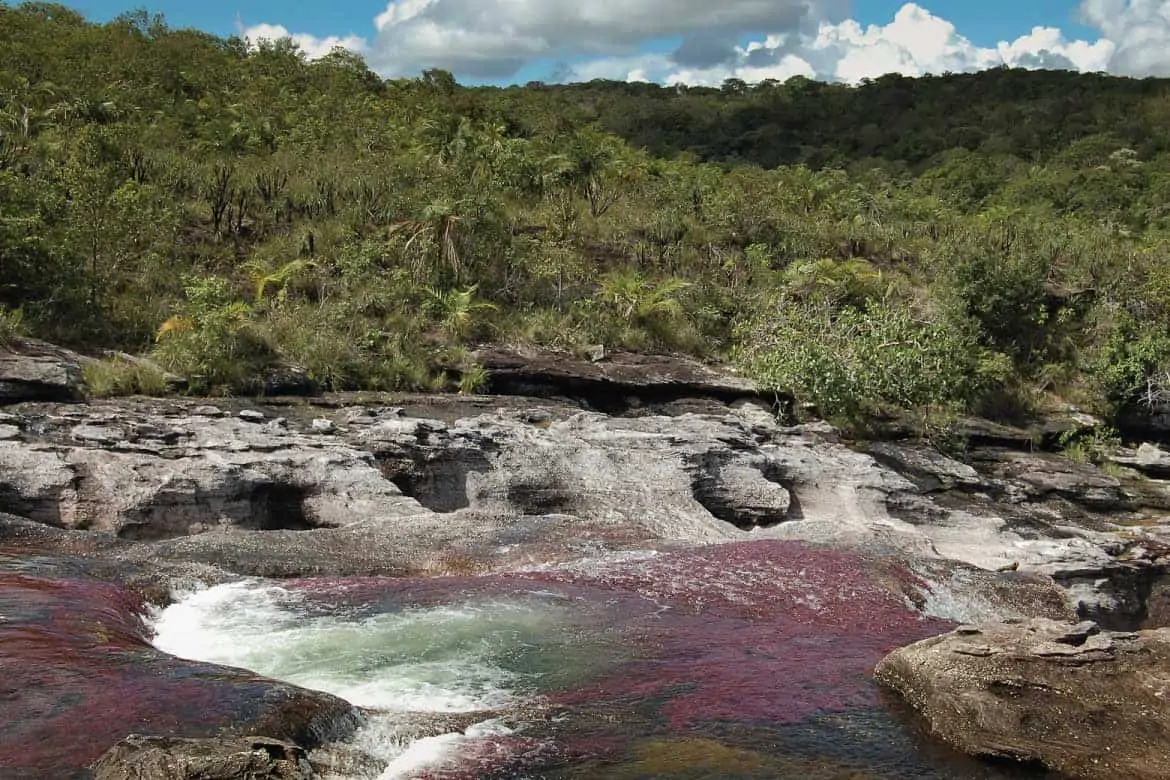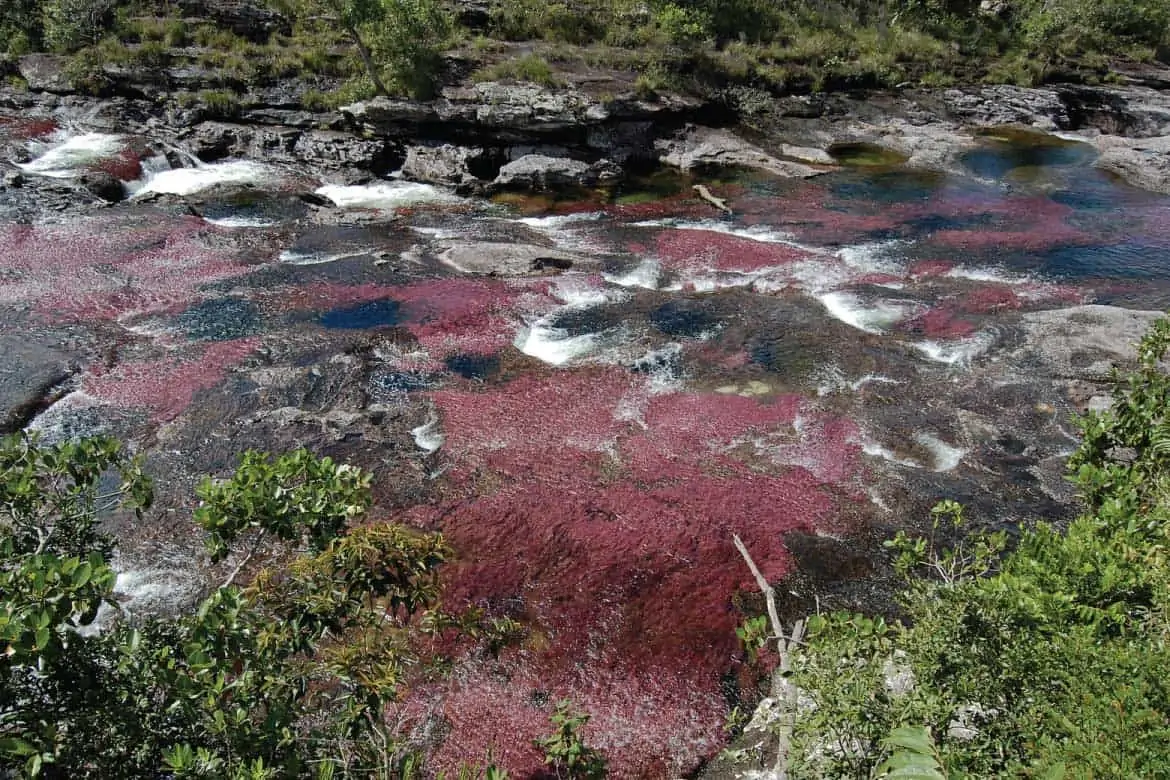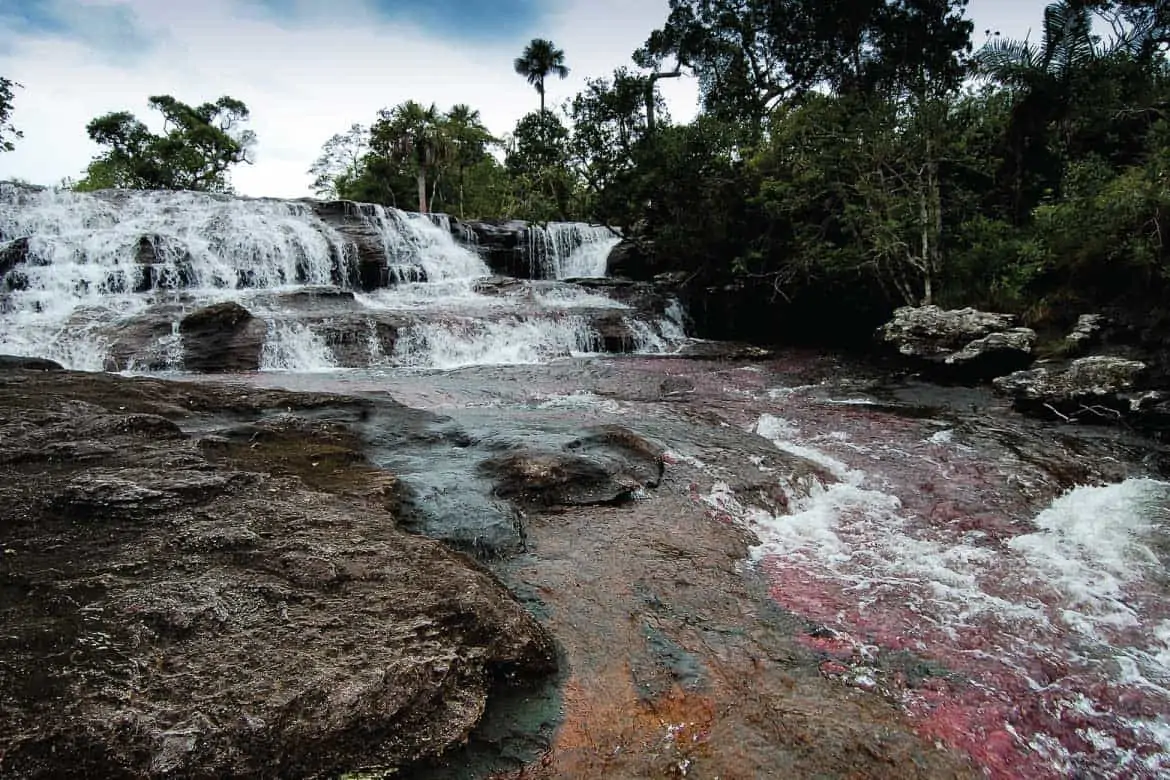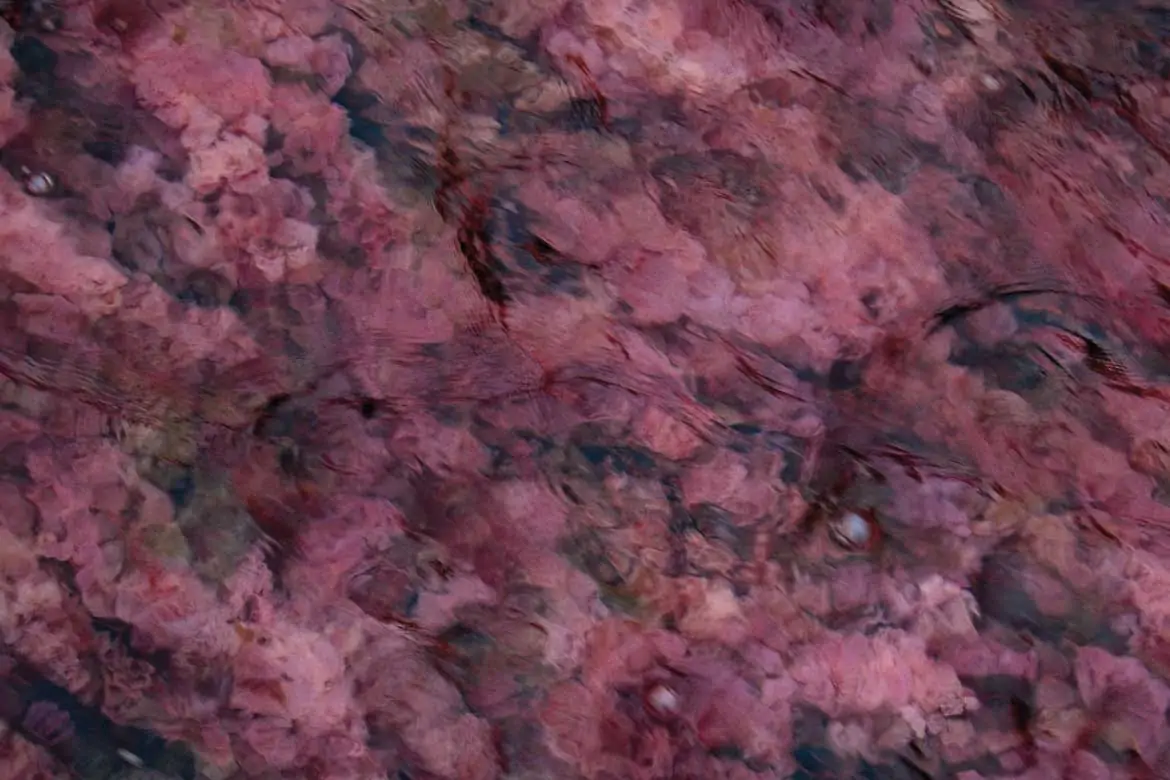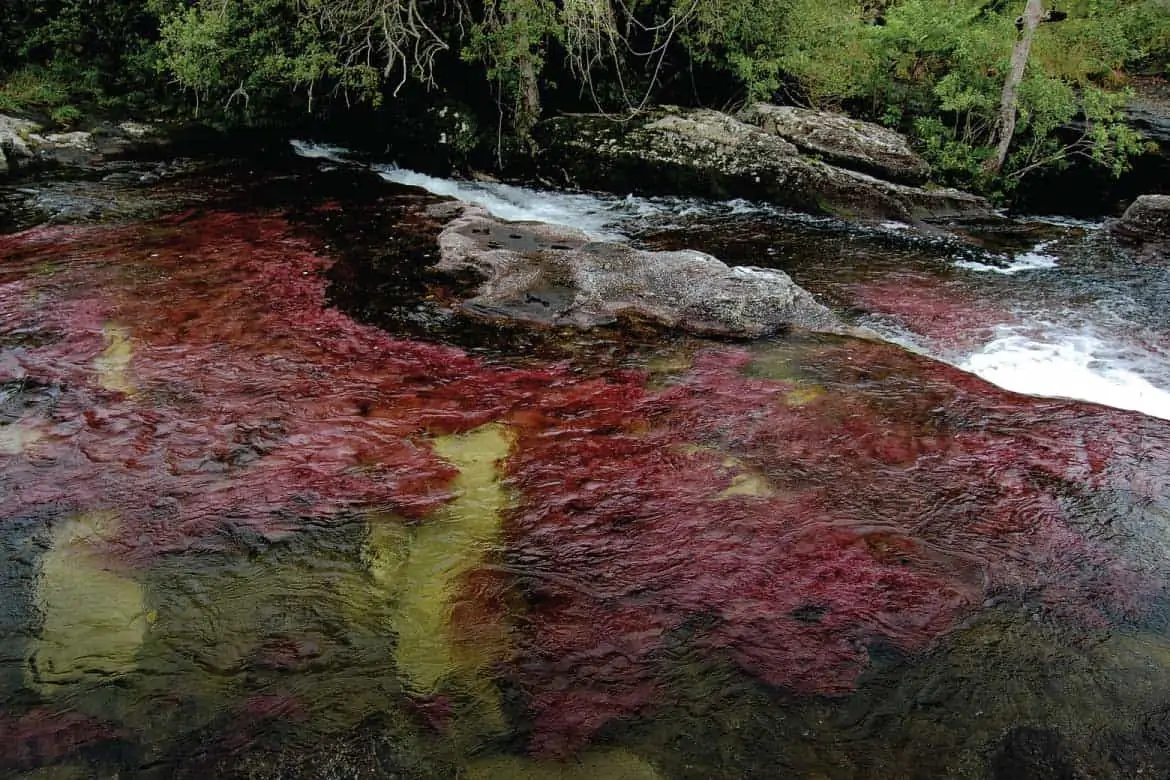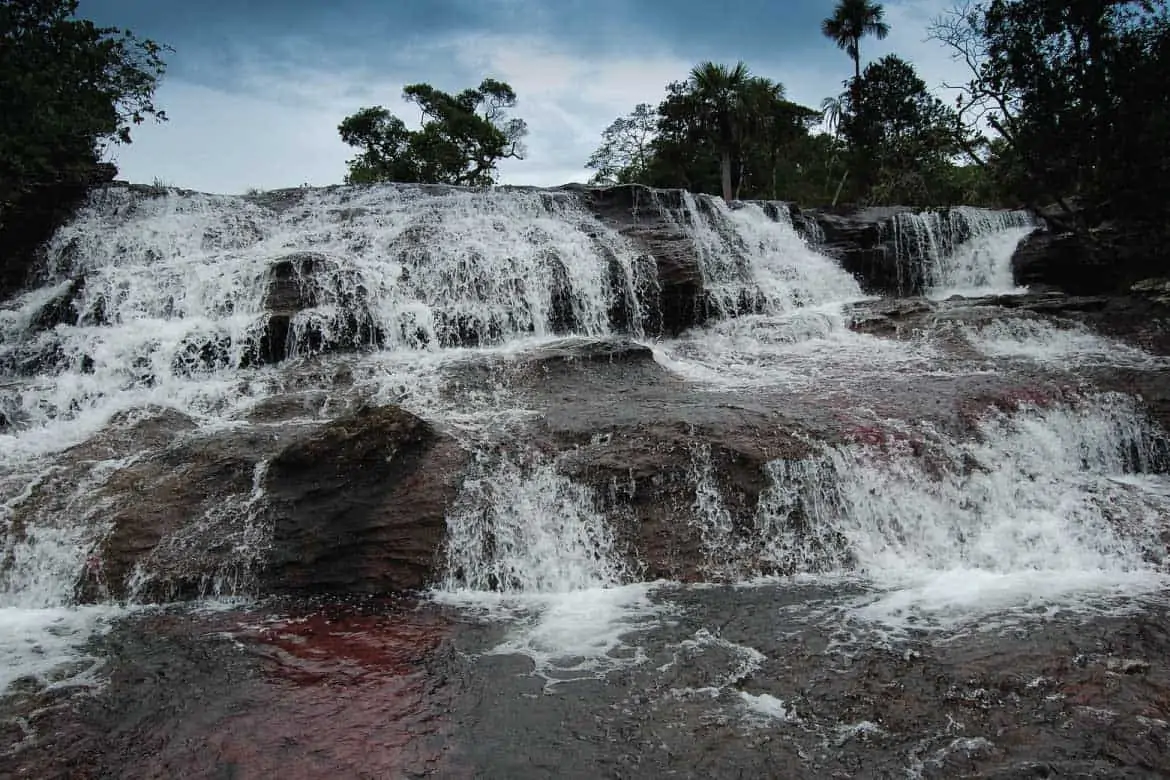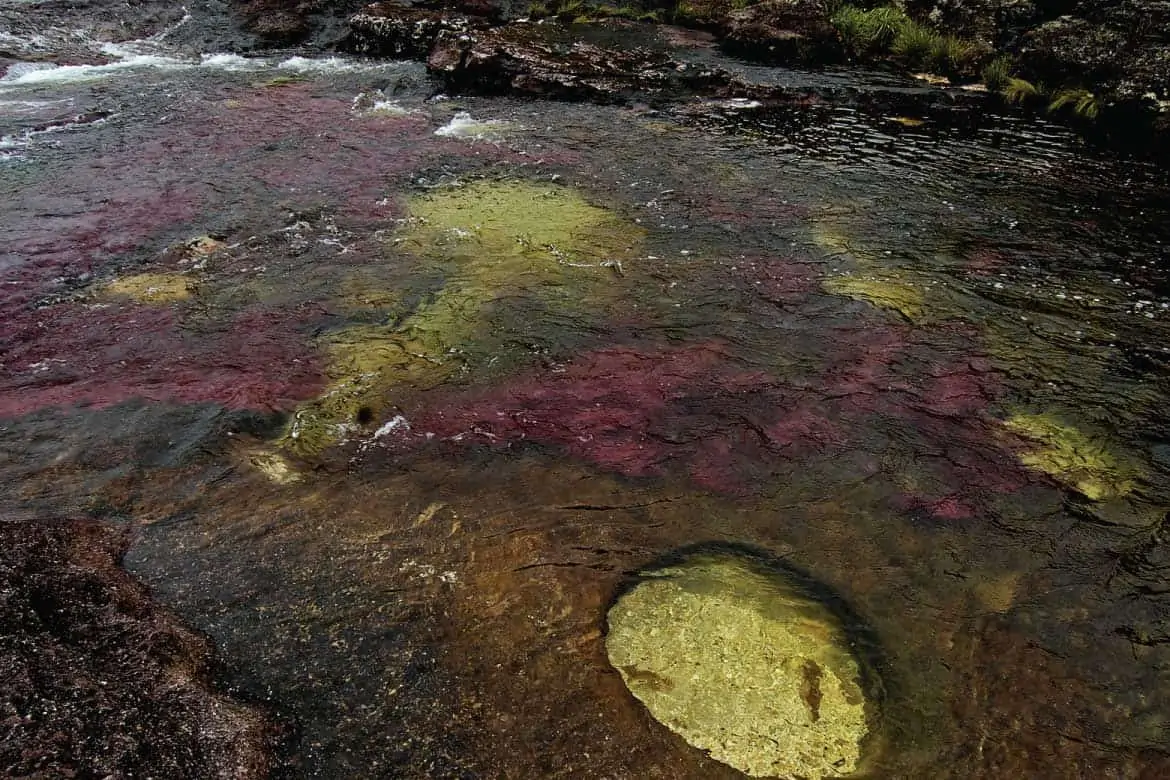Caño Cristales
By Vicki Kellaway
This is an article from our magazine section. Here is our Caño Cristales destination information.
Once upon a time there was a beautiful river. The river was famed throughout Colombia – coloured as it was by a rare underwater plant – but it posed just one problem for travellers. It was buried deep in the heart of the nation’s plains, 170 miles from Bogotá and notoriously difficult to reach.
This should be a story about that river; a lyrical waxing about its powers to enthral and captivate, a first-hand account of its majesty and a small gasp of wonder at the deep magenta of its waters. But it’s not. Because, as always in Colombia, what you seek is not necessarily what you will find.
Driving to Caño Cristales from Villavicencio, the capital of the department of Meta, is ill-advised, as is taking a commercial flight – unless you plan to brave the unpredictable los llanos weather for a week. The best option is to hire a retired military aircraft, which is all great fun until you see your plane arrive, looking a little old and somewhat forlorn. It’s not bad for a Second World War relic though and, once off the ground, it drones along quite merrily.
The flight is not long – perhaps 40 minutes or so – but it’s quaint, lined against one side of the aircraft as you’ll be, facing, in our case, an entire family’s cargo, including their motorbike. The windows are square and the seats are canvas, not that you’ll be in them for long. The pilots will be only too happy to allow you into the cockpit for photographs. They’ll even rustle up a bucket of in-flight snacks.
Our arrival in the small town of La Macarena was unceremonious. The plane had barely stopped bumping along the rough airport turf before the trapdoor opened and a tiny ladder was extended onto the grass. A horse-and-cart stood patiently awaiting our arrival. This is the town’s answer to baggage handling, which, while rustic, is at least environmentally friendly.
But we weren’t done with our beloved plane yet. While the horse backed slowly towards the open door, one of the pilots invited us to take a walk on the wing. I couldn’t resist, even though I suspect it was just an excuse for him to look gallant in his uniform and hold tightly onto my hand.
At first glance La Macarena could be one-horse town – all pool bars, panaderías and tiny shops, selling lassos and cowboy hats among the usual fare. There appears very little to do, which may explain why so many youngsters act as guides to Caño Cristales, the river everyone comes to see.
We’d taken a bus, our own plane, a boat, a jeep and hike but it was worth the lot when we could finally see those red-purple plants glowing under the fierce llanos sun. The surrounding jungle suddenly seemed greener and the skies even bluer. The rocks are pink too, forming strange caves and formations around the crystal water as it surges over those vivid colours.
The first day was a dream, a mix of sunbathing and swimming as we bathed in the delight of reaching such a strange and idyllic spot. Then, of course, the heavens opened. The second day was a washout – the water flowing so white and foamy it covered the plants completely. Conversely the waterfalls became yet more spectacular – angry, perhaps, at always losing centre stage – and the plants became even dearer to us as we realised they could be snatched away at any moment.
Both plants and colours reappeared the following day as the waters calmed and we ventured upstream, scrabbling over the slippery rocks and wading through the water. Caño Cristales is spectacular. Is there a river in the world that can match such weird, rainbow-coloured beauty?
But I told you Colombia will always give you that which you hadn’t thought to seek and it’s true. The river is beautiful but it’s the nearby town of La Macarena, not forgetting the struggle to reach it, that’s the true gem here what with the horses, the dogs, the kids and the warm welcome – not to mention the aguardiente-soaked rumba.
The locals even threw a huge barbecue in our honour, stuffing us with their famous open fire cooked meat as they taught us to dance llanero-style long into the night.
We arrived looking for a river, but we found a lot more.
About the writer
Brit Vicki Kellaway earned her stripes as a journalist back in the UK and has now chosen to make a life for herself in Colombia’s capital Bogotá.
Vicki is a regularly published contributor to Bogotá’s The City Paper and is also the wordsmith behind the award winning weblog Banana Skin Flip Flops where she chronicles her travels and insightful musings not only in Colombia but throughout Latin America
Of course, Vicki also writes exclusive articles for Colombian Life. Our online magazine.


